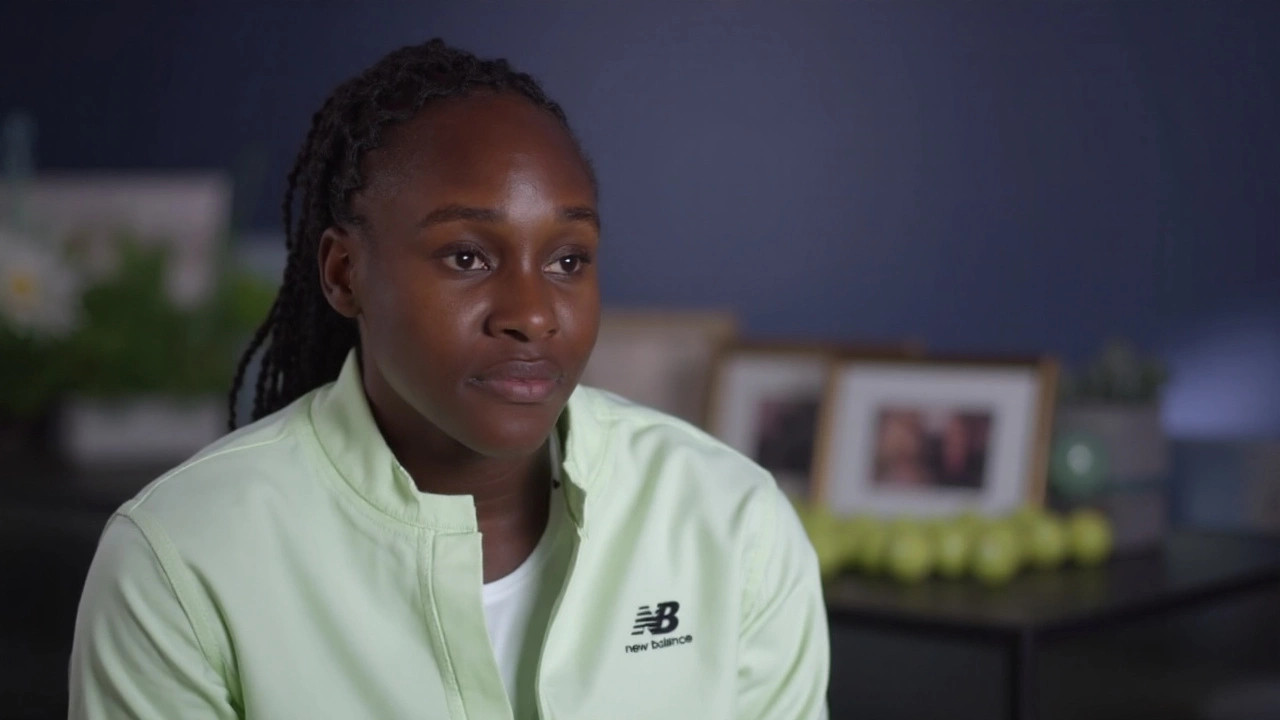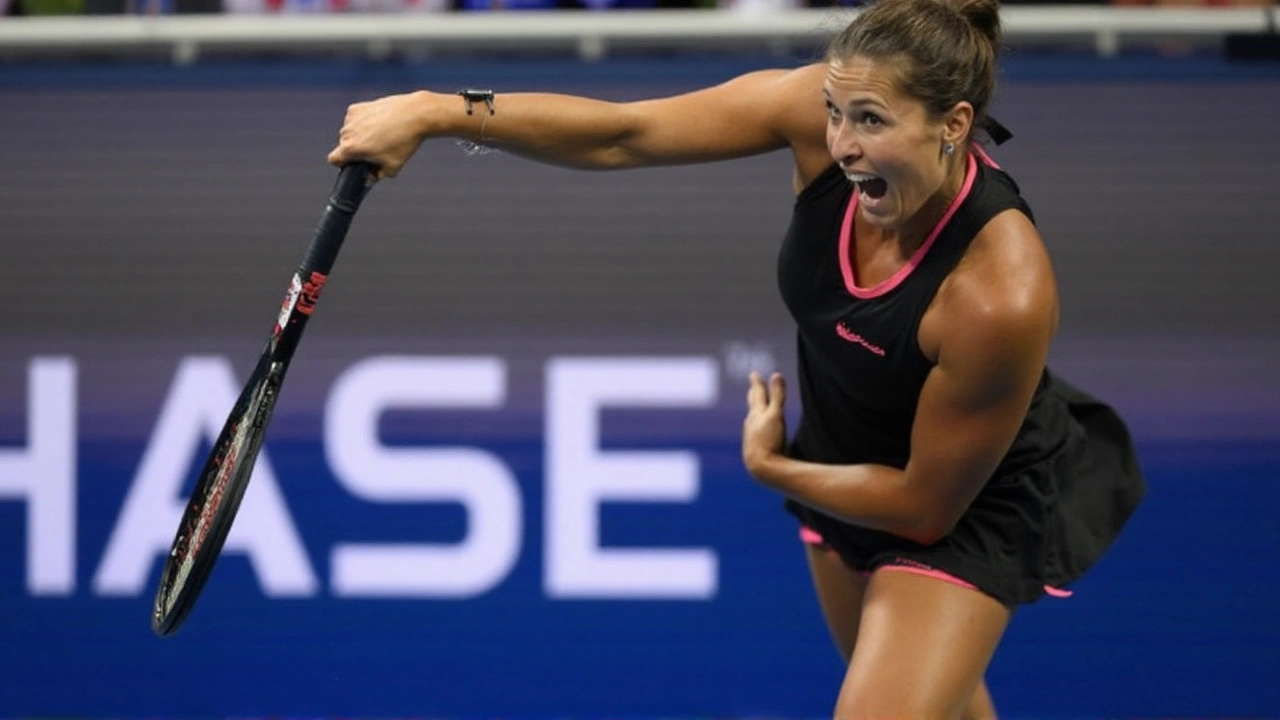Gauff targets another New York breakthrough
New York gets loud. Few players feed off it like Coco Gauff. The reigning French Open champion and 2023 US Open winner sat down with Saturday TODAY’s Laura Jarrett to talk through her mindset heading into her home major. She called playing the US Open as an American “the proudest moment” of her career, a simple line that says everything about how much the city and the tournament mean to her.
This summer’s clay-court run reminded everyone why she sits among the sport’s elite. Now the surface changes, the energy spikes, and the spotlight widens in Queens. The US Open is chaotic in the best way—night sessions, swirling wind in the stadiums, heat that lingers even after sunset. It’s also where Gauff has already proven she can carry the weight of expectation, navigate the noise, and close on the biggest stage.
Gauff didn’t hide what fuels her: the crowd. The cheers in Arthur Ashe Stadium don’t just lift a player—they can swing a set. That connection matters. American champions before her have made New York their stage, and Gauff has settled into that role with comfort and clarity. She knows the trade-off too: extra requests, more cameras, long days that stretch into nights. Managing that load is part of the job when you’re one of the most visible athletes in the draw.
She enters with momentum and a clear plan to build on it. Preparation for a hard-court Slam is simple in theory and tricky in practice: sharpen the first serve, adjust timing on the forehand, get comfortable taking the ball early, and rehearse patterns that hold under pressure. New York adds variables—humidity, late starts, quick turnarounds—that test recovery and focus. Gauff’s team will lean on routines that helped her handle that grind before.
On court, a few themes tend to decide her ceiling in New York:
- First-serve percentage and placement: Free points matter in Ashe, especially at night when the court can play quicker.
- Forehand confidence: When she trusts it and hits through the court, her whole game loosens up.
- Second-serve returns: Stepping in and taking time away keeps opponents on the back foot.
- Transition game: Turning defense into offense and finishing at net shortens rallies and protects legs through a two-week event.
- Match management: Handling long changeovers, the noise, and momentum shifts in front of a restless crowd.
That last piece—managing chaos—might be her biggest edge. In 2023, she learned how to slow matches down without losing aggression. Since then, she’s looked more comfortable dictating with her feet, using her speed to set up forehands she can drive. The French Open title was a reminder that her baseline patterns are built for big points and long battles.
There’s also the field to consider. The women’s draw is deep, and it rarely gives you clean air. There will be top seeds peaking, big hitters playing free, and the usual handful of dangerous floaters who love fast courts. Gauff’s path won’t be linear; it never is at Flushing Meadows. That’s why the early rounds matter—get through quickly, conserve energy, and avoid the five-hour night that turns into a recovery scramble.
Off the court, she balances something few athletes her age handle this well: commercial pull and competitive focus. Being among the highest-paid female athletes sounds glamorous. It’s also work—shoots, obligations, and a bigger spotlight. The trick is keeping the main thing the main thing, especially in a city that offers a hundred distractions before breakfast. So far, she’s navigated that split with patience and smart boundaries.
Honoring trailblazers while building her own
Gauff’s voice turned personal when she talked about the people who cleared the path. She grew up on Serena and Venus Williams—the first players she says she really knew. Their blueprint is hard to miss: power, presence, and a relentless push for more. You can see echoes of that in how Gauff competes and in how she talks about responsibility, not just results.
She also paid respect to Althea Gibson, a name her father made sure she knew early. That matters. Gibson didn’t just win; she kicked open doors that others walked through later. For Gauff, understanding that history isn’t trivia—it shapes how she sees herself in the sport and how she talks to the next generation. You sense it in the way she frames her goals: not only winning, but showing up in a way that leaves space for more young players to see themselves on big stages.
This is where the US Open feels like the right setting. New York celebrates roots and reinvention at the same time. The tournament highlights legacy while crowning what’s next. When Gauff steps into Ashe, she isn’t just defending a chapter; she’s writing a new one with those names in the background, not as weight but as fuel.
That perspective also sharpens how she competes. Pride and pressure can blur if you let them. Gauff talks about the home Slam with joy, not dread. She embraces the kids in the stands yelling her name, the families who save up to take the subway to a night session, the players who remember their first glimpse of Ashe under the lights. Connection like that gives purpose to the grind.
So what does a successful tournament look like for her? It’s less about a number and more about execution. Hold serve when it matters most. Win the short exchanges at the start of sets. Stay calm when an opponent catches fire for three games. Trust the patterns that got her here. If she does that, the scoreline usually follows.
There’s a practical side too—staying healthy. Two weeks on hard courts can be brutal on knees, hips, and lower back. Smart scheduling in the lead-up, honest conversations about soreness, and recovery that starts the minute the last ball is struck all make a difference. Gauff’s team will watch those details because they stack up by the second week.
Fans will watch for the intangibles. Does she look relaxed in walk-ons? Is she taking returns early and leaning into the court? How quickly does she reset after a rough game? These are tells of a player in control of her plan, not reacting to her opponent’s.
And then there’s the New York factor again—the soundtrack, the celebrities in the front row, the late-night TV clips. Some players try to block it out. Gauff seems to let it in without letting it take over. That’s a rare balance at her age and stage, and it might be the difference between a good run and another trophy photo on the plaza.
She summarised it best without trying to make it grand. Playing the US Open as an American isn’t just another box to check. It’s pride, it’s history, and it’s home. With the crowd behind her and the lessons of Serena, Venus, and Althea in her pocket, Gauff starts this campaign as one of the women to beat—and as a player who knows exactly why she wants to win here, again.


